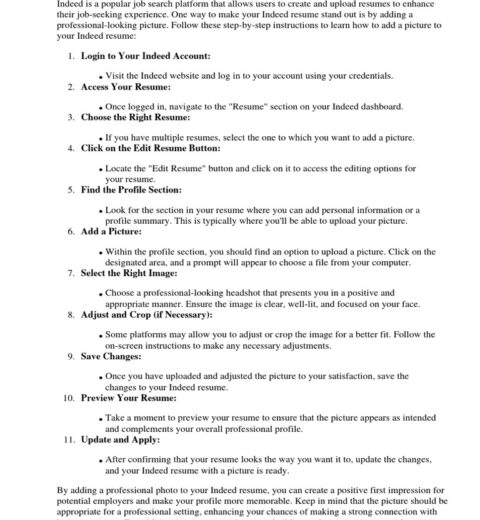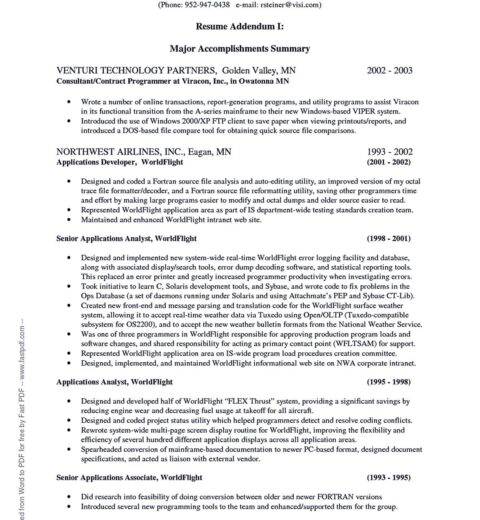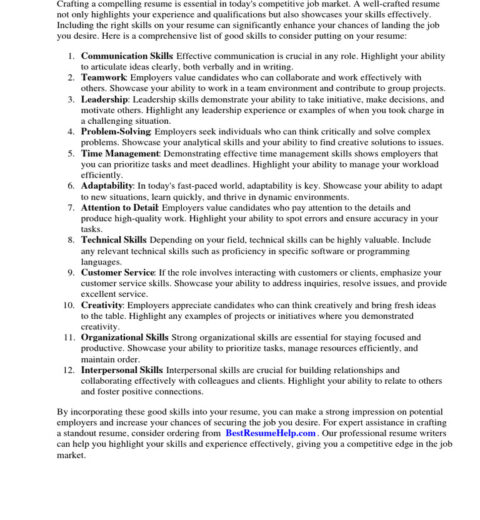In the ever-evolving landscape of job applications, applicants frequently grapple with the decision of whether or not to include a photograph in their resumes. This seemingly innocuous choice can provoke considerable debate, as opinions diverge significantly among industry professionals and human resource personnel. Should you adorn your resume with a snapshot, or would it be more prudent to forgo this practice? This article delineates the pros and cons of including a picture on your resume, facilitating a well-informed decision.
The practice of incorporating a photo into a resume can be traced to cultural norms, which vary widely across the globe. In some countries, particularly in Europe, it is not uncommon for applicants to present a photograph alongside their qualifications. Conversely, in the United States, including a picture is often eschewed, primarily due to the potential for unconscious bias in hiring decisions. Nonetheless, this choice warrants an exploration of its advantages and disadvantages.
Pros of Including a Picture
1. Personal Branding: A well-chosen photograph can serve as a compelling tool for personal branding. It provides a face to your credentials, fostering a connection between you and the recruiter. A professional image can enhance your appeal and distinguish you from a pool of similarly qualified candidates.
2. Memorability: Human memory is intrinsically linked to visual stimuli. A picture can make your resume more memorable, helping hiring managers recall your application amidst a sea of text-heavy documents. This could give you a competitive edge, especially in industries where personal connection and relatability are prized.
3. Culture Fit: In job sectors where interpersonal skills and cultural fit are paramount, a photograph can convey a sense of approachability and likability. Employers may seek candidates who not only possess the requisite skills but also fit seamlessly into their organizational culture. A friendly, professional image might suggest that you are a good match for the team.
4. Visual Appeal: A visually appealing resume often stands out to employers who are inundated with monotonous formats. Including a photograph can contribute to a modern and aesthetically pleasing design, potentially enhancing the overall quality of your application.
Cons of Including a Picture
1. Bias Concerns: The inclusion of a photograph opens the door to potential bias, whether conscious or unconscious. Recruiters may form opinions based on your appearance, which can lead to discrimination against candidates based on age, gender, ethnicity, or other superficial factors. To mitigate this risk, it may be advisable to forgo a picture altogether.
2. Format Limitations: Resumes are generally expected to be straightforward and concise. Incorporating a photo can disrupt the layout and detract from the essential content. A picture might squeeze out valuable space that could have been devoted to highlighting your skills and achievements, which are far more critical to securing an interview.
3. Industry Conventions: In certain industries, particularly in the United States, the omission of a photograph is the norm. Including a picture can appear presumptuous or out of touch with expected practices. Familiarizing yourself with industry standards is crucial; many organizations prefer a traditional, unembellished resume format.
4. Technical Issues: Digital submissions are the standard in contemporary job applications. As such, you must consider file size and compatibility. A high-resolution photograph can inflate your file size, leading to potential issues during submission or compatibility with applicant tracking systems (ATS), which may struggle to parse images appropriately.
Considerations Before Making Your Decision
As you ponder whether to include a photograph in your resume, several factors merit consideration. Firstly, scrutinize the industry in which you are seeking employment. In sectors where personal branding is pivotal—like entertainment, modeling, or public relations—a picture may be essential. However, in more conservative fields, such as finance or law, it might work against you.
Secondly, consider the company culture. If you are applying to a startup known for its creative and modern approach, a photograph may be welcomed. Conversely, if your target organization is traditional and hierarchical, it is prudent to adhere to the conventional format.
Finally, reflect on your comfort level. If you feel your photograph encapsulates your professional demeanor and personality, it may add value to your application. However, if you harbor any reservations about how such an image might be perceived, opting for a more standard approach may serve you well.
In conclusion, the decision to include a photograph on your resume is far from trivial. It presents a series of pros and cons that must be weighed in conjunction with industry standards, company culture, and personal comfort. Ultimately, crafting a compelling resume requires careful consideration of how best to showcase your skills and fit for the role. As you navigate this choice, remember that the primary objective is to present a clear, concise representation of your qualifications, ensuring that your unique strengths stand out.




